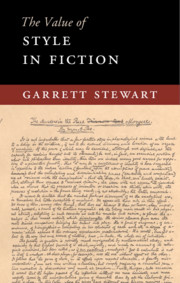Book contents
4 - A Rhetorical Spectrum: Wharton, Woolf, Waugh, Wallace, and Beyond
Published online by Cambridge University Press: 01 June 2018
Summary
There is another way, now, to articulate the questions that have spurred the examples so far. How does style dial-in and fine-tune – ultimately evaluate – the rhetorical stance that actively enlists it, in everything from bitter tragic solemnity to celebration to satire, elegiac fade-out to epiphanic lift-off to sarcastic barb? And with what plausible variety across the whole range of modern and postmodern writers whose prose possibilities can be recognized as unshackled precisely by the decadent and impressionist breakthroughs at the turn of the nineteenth century? When Lily Bart's drug overdose in Edith Wharton's The House of Mirth (1905) is ferrying her to oblivion, style catches not only the lulling of cognition in the whispers of sibilance but also the last spasm of panic. We hear, first, that all worry “was gradually lost in an indistinct sense of drowsy peace”: a double genitive, with “sense” being both “drowsy” in itself, quiescent, and vanishingly aware of itself as such. Tracked by sound and sense together is a dimming of mind “through which, of a sudden, a dark flash of loneliness and terror tore its way.” Here it is the first disruptive and idiomatic preposition “of” (as in “all of a sudden”) that imparts so new and wrenching a lurch to the prose that the keyword of dread, no sooner emerging from a compound grammatical bond with isolation (in the faintly bracketing assonance of “loneliness and terror”), is then sped to its own impacted phonetic and word-rending telescopic compression in “terror tore” (335)—as if the homophonic tear of trauma were ripping open the noun itself.
But short of insisting on a coordinated mimetic syntax articulating this last crisis for the heroine, what, more generally, are the effects of rhetoric, in terms of persuasive reader investment, micromanaged by such stylistic intensity? Questions like this are by no means merely rhetorical, at least once the rhetorical stance in question is specified – and identified all the more clearly by contrast with certain decided alternatives, to be examined next, in the further difference between the often rhapsodic stream of consciousness in Virginia Woolf and the extravagant satiric discourse of her younger contemporary Evelyn Waugh. We've seen in the Introduction the weight of mordant syntactic understatement, with none of Wharton's fierce immediacy, in one of Woolf's most arresting ex post fact death scenes.
- Type
- Chapter
- Information
- The Value of Style in Fiction , pp. 101 - 126Publisher: Cambridge University PressPrint publication year: 2018

